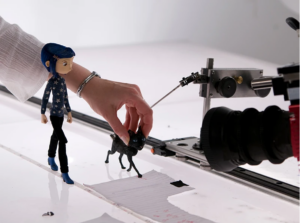The World of Animation Styles: From 2D to 3D and Stop-Motion
The history of animation dates back to the beginning of the film industry itself. In the early 1900s, simple drawings and images were captured on celluloid film to create movement. These hand-drawn animations soon became popular with audiences and laid the foundation for the development of animated characters such as Mickey Mouse, Bugs Bunny and many others.
Over the years, 2D animation continued to evolve with technological advances and innovations such as colour and sound. Famous animation studios such as Disney, Warner Bros. and Hanna-Barbera delivered timeless classics and set the standard for animation in the film world.
2D Animation: A Timeless Art Form
2D animation is the oldest form of animation and laid the foundation for the entire genre. It involves drawing characters and objects frame by frame on a flat surface. This style is nostalgic and remains popular due to its hand-drawn aesthetic. Think of classics like "Snow White" and "The Lion King", where artists captured every movement by hand. But 2D animation has not stood still; it has adapted to modern technologies and found new expressive possibilities.


3D Animation: Realism and Imagination
While 2D animation was the norm for decades, the rise of 3D animation opened new doors for creativity and storytelling, giving films a new dimension, both literally and figuratively.
The 1990s marked a turning point in the world of animation with the rise of 3D animation. Advances in computer graphics and technology enabled filmmakers to create three-dimensional models and bring them to life on screen.
One of the first pioneering films to embrace 3D animation was 1995's "Toy Story", produced by Pixar Animation Studios in collaboration with Disney. The film marked a milestone as it was the first fully computer-animated feature film. The success of "Toy Story" opened the industry's eyes to the possibilities of 3D animation. It brought extraordinary worlds to life and opened the door to visual storytelling on a whole new level.
Benefits and Complexity of 3D Animation
3D animation brought numerous advantages. It enabled more detailed and realistic images, allowing filmmakers to create stunning visual worlds previously unthinkable. Characters gained more depth and emotion, while environments felt realistic. At the same time, 3D animation also brings new challenges. It requires sophisticated software, specialised skills and more complex workflows. Animators need to be not only artistically gifted but also technically savvy to create digital models and animations.

Stop-Motion: Touchable Magic
Maar naast de welbekende 2D- en 3D-animatie zijn er nog andere intrigerende animatiestijlen, zoals de charmante stop-motion. Stop Motion is een unieke en arbeidsintensieve stijl die werkelijke objecten gebruikt om beweging te creëren. Elke scène wordt opgebouwd met fysieke modellen die frame voor frame worden verplaatst en vastgelegd. Deze objecten worden telkens een beetje verplaatst en daarna met één frame per keer gefotografeerd. Wanneer ze in volgorde worden getoond, creëren deze frames de illusie van beweging.
In high-quality stop-motion animation, as created by studios such as Laika (known for films like "Coraline" and "Kubo and the Two Strings"), it uses specially designed puppets that are photographed on a miniature stage.
This produces a beautiful tactile aesthetic. Stop-motion retains a charm that comes from tangible interaction with material objects.

Cut Out Animation
Een variant van stop-motion animatie is de “cut-out” animatie. In deze animatiestijlen worden personages opgebouwd uit papieren vormen. Deze vormen kunnen aan de gewrichten aan elkaar worden vastgemaakt om een beweegbaar figuur te maken, of delen kunnen worden geplaatst zodat ze kunnen worden vervangen. Vervolgens worden ze frame voor frame verplaatst en gefotografeerd, net als bij een stop-motion pop. Dit is bijvoorbeeld hoe South Park oorspronkelijk geanimeerd werd.

Applications and Evolution
Animatiestijlen hebben elk hun eigen toepassingsgebieden. 2D-animatie wordt vaak gebruikt voor snelle productie van tv-series en reclames, terwijl 3D-animatie de overhand heeft in speelfilms en technisch complexe projecten. Stop-motion wordt vaak ingezet voor kunstzinnige en originele projecten. Bovendien is de grens tussen deze stijlen niet absoluut; er zijn steeds meer hybride benaderingen die elementen van verschillende stijlen combineren.
Conclusion
De wereld van animatievideo’s is divers en boeiend, dankzij de verschillende animatiestijlen die het rijke spectrum van visuele expressie verkennen. Van het klassieke gevoel van 2D tot de verbluffende diepte van 3D en de tastbare magie van stop-motion, elke stijl heeft zijn eigen unieke karakter en toepassingen. De constante technologische vooruitgang blijft deze stijlen verder vormgeven en verfijnen, waardoor animatie een onmisbare en evoluerende kunstvorm is in de wereld van visuele storytelling.
Meer interesse hoe wij het aanpakken? Contact us!









